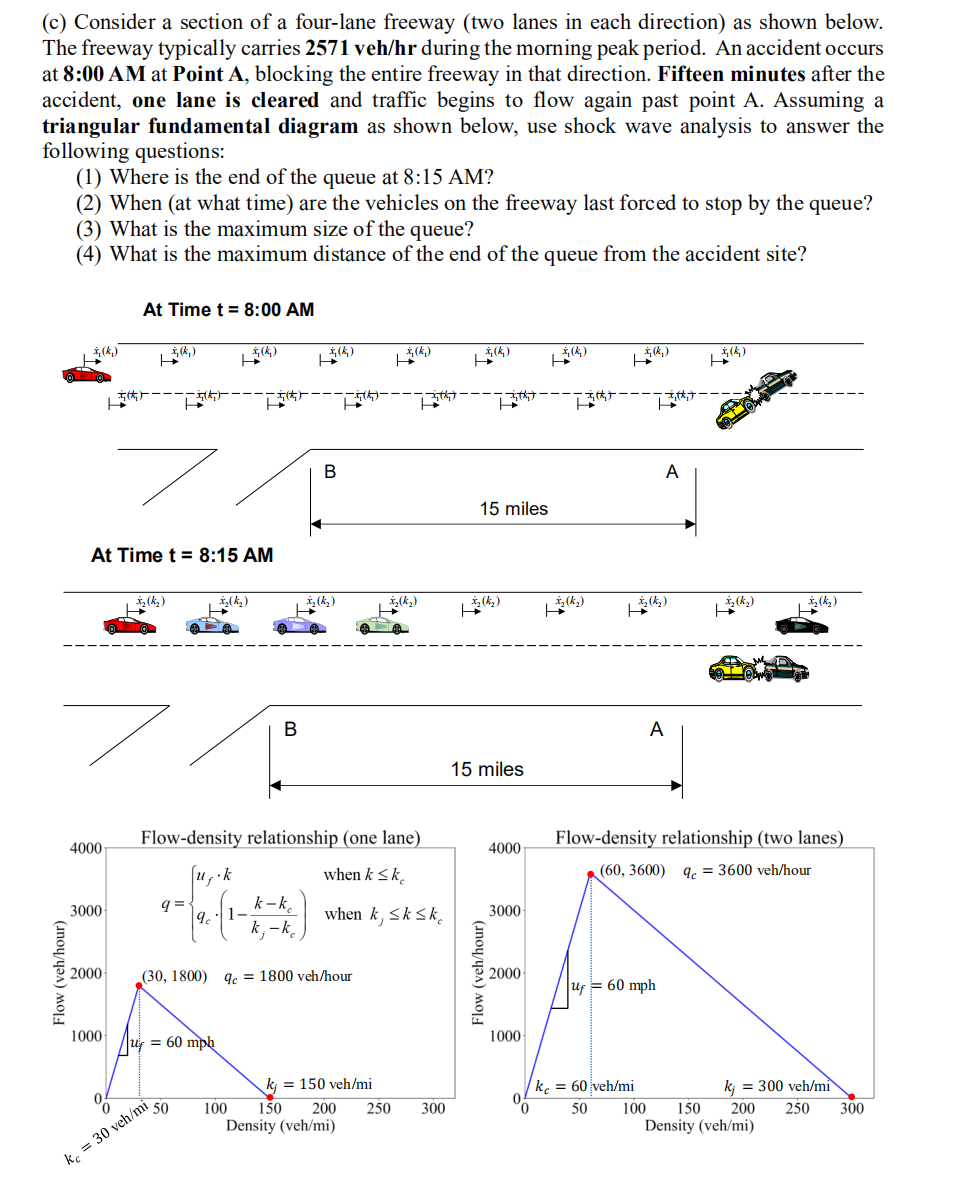Home /
Expert Answers /
Civil Engineering /
c-consider-a-section-of-a-four-lane-freeway-two-lanes-in-each-direction-as-shown-below-the-fr-pa143
(Solved): (c) Consider a section of a four-lane freeway (two lanes in each direction) as shown below. The fr ...
(c) Consider a section of a four-lane freeway (two lanes in each direction) as shown below. The freeway typically carries 2571 veh/hr during the morning peak period. An accident occurs at 8:00 AM at Point A, blocking the entire freeway in that direction. Fifteen minutes after the accident, one lane is cleared and traffic begins to flow again past point A. Assuming a triangular fundamental diagram as shown below, use shock wave analysis to answer the following questions: (1) Where is the end of the queue at 8:15 AM? (2) When (at what time) are the vehicles on the freeway last forced to stop by the queue? (3) What is the maximum size of the queue? (4) What is the maximum distance of the end of the queue from the accident site? At Time t = 8:00 AM (k) 5) ETT ???? B ? 15 miles At Time t = 8:15 AM *, (k) 1(k) (k) *,(k) *, (k) 1(k) B A miles Flow-density relationship (one lane) Flow-density relationship (two lanes) 4000 4000 lu, k when k sk (60, 3600) 4c = 3600 veh/hour 3000 9= 1- 9 k-k k; -k 3000 when k, sk sk Flow (veh/hour) 2000 (30, 1800) 4c = 1800 veh/hour Flow (veh/hour) 2000 up = 60 mph 1000 1000 | u = 60 mph 50 k; = 150 veh/mi 100 150 200 250 Density (veh/mi) 300 0 ke = 60 veh/mi k; = 300 veh/mi 50 100 150 200 250 300 Density (veh/mi) k = 30 veh/mi
